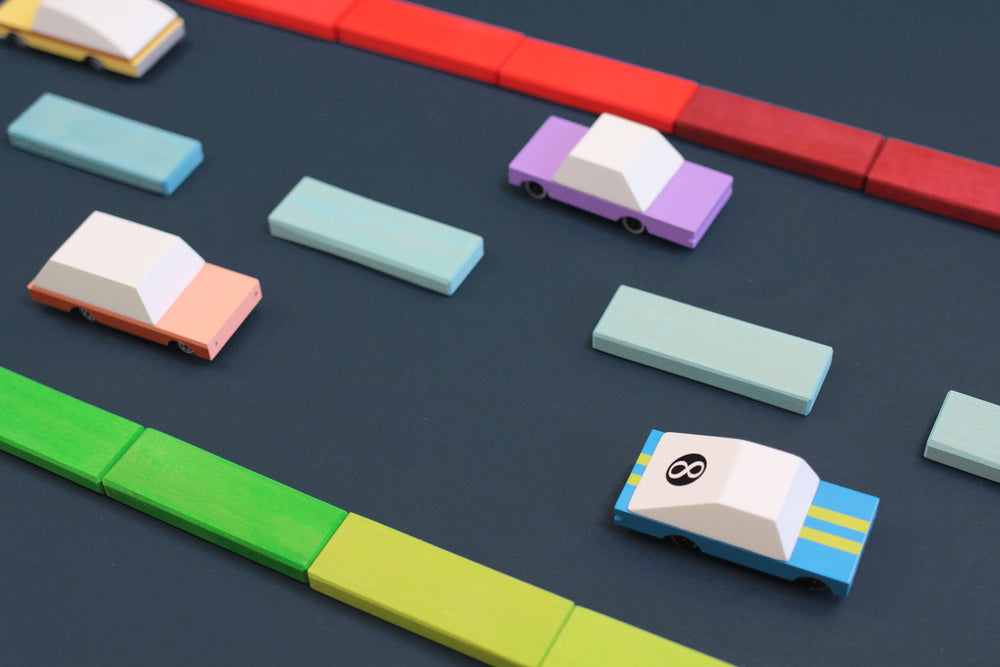5 Ways to Play with Vehicles


Children are naturally drawn to cars and other mobile toys. Let your child experiment with their vehicles before prompting particular play. Feel like your child is ready to expand on his or her vehicle exploration? Here are a few of our favorite ways to play with vehicles:

Develop a world
Gather blocks or other building tools and add them to the play space. Encourage your child to think about how their cars and trucks function in a particular place (real or imaginary). Where do they park? What do they drive on? How do they know when to stop and go? Use the building materials to develop this environment. Ask questions that prompt storytelling and bring the world to life: Who drives the blue car? Where is the taco truck headed? What happens when there is an accident?

Practice sorting and create categories
If your household has a large collection of vehicles, gather them all in one room and wonder aloud how you might go about organizing them. Start with categories like size, color, and shape, and then more complex ones like function, speed, and number of wheels. If your child enjoys the process, think about using sorting as a tool to encourage post-play cleanup. Empower your child by putting them in charge of the process. How would they like to organize their collection? Supply bins and labels and work together to create a storage space that is fun and functional. Repeat the process every few months using different categories to keep your child engaged and motivated. If this method is successful with their vehicles, try with other toys as well!

Experiment with slopes and speed
Gather building elements like boxes, wood, and poster board. Discuss with your child how you might use them to make slopes. Work together to create a variety of different ramps, and then experiment! Notice that certain slopes make vehicles move faster than others. Why does your child think that is? Introduce words like "angle", "steep", and "velocity". Set up races to test different variables: Which car travels slowest when they are all on the same ramp? Which ramp makes vehicles move the fastest? Can you connect two ramps of different angles together? What happens when you try?
Test outdoor terrains
Get outside! Take your transportation toys with you to the yard, park, or on a walk around your neighborhood. Encourage your child to experiment using their cars on different surfaces and terrains. Ask questions: How does it feel to drive on the grass? What about the sidewalk? Can that truck drive up a tree? Under a bush? Through the mulch? Children will enjoy the different sensory experience of each material and likely want to experiment more. Think about ways to create environments that you may not have access to nearby. For example, create a driving surface of ice by filling a sheet pan with water and freezing it. How do cars drive on a frozen tundra? Do they move differently as the ice begins to melt?

Find resources and do some research
Ask your child about the cars and trucks they are playing with. Do they know all their names? Who drives them? How do they function? If your child is curious to learn more about their vehicles, take the opportunity to do some research. Have a conversation about where you might look to find more information; think books, magazines, experts, and articles. If your child is engaged, go for a walk or drive and observe vehicles in the real world. See if you can find ones that are similar to those in your child’s collection. Consider documenting your findings by creating a journal page for each vehicle with photos, drawings and/or notes detailing what you discovered together. The next time your child takes out their transportation toys, observe the ways they incorporate their new knowledge into play.
Recent Articles
-
Playful Primer 10 Must-Have Toys for Your Next Backyard BBQ
Summer is just around the corner and we're ready for it! From backyard BBQs to neighborhood park outings, we've discovered...
read more -
Playful Primer Tips & Toys to Support Group Play Experiences
Catching a glimpse of children happily engaged in pretend play is like witnessing pure magic. Ever wonder how closely you...
read more -
Playful Primer 5 Ways to Strengthen the Bond Between Siblings
“I’ll take care of the bike. You take care of each other.” This is what I said to my children...
read more
